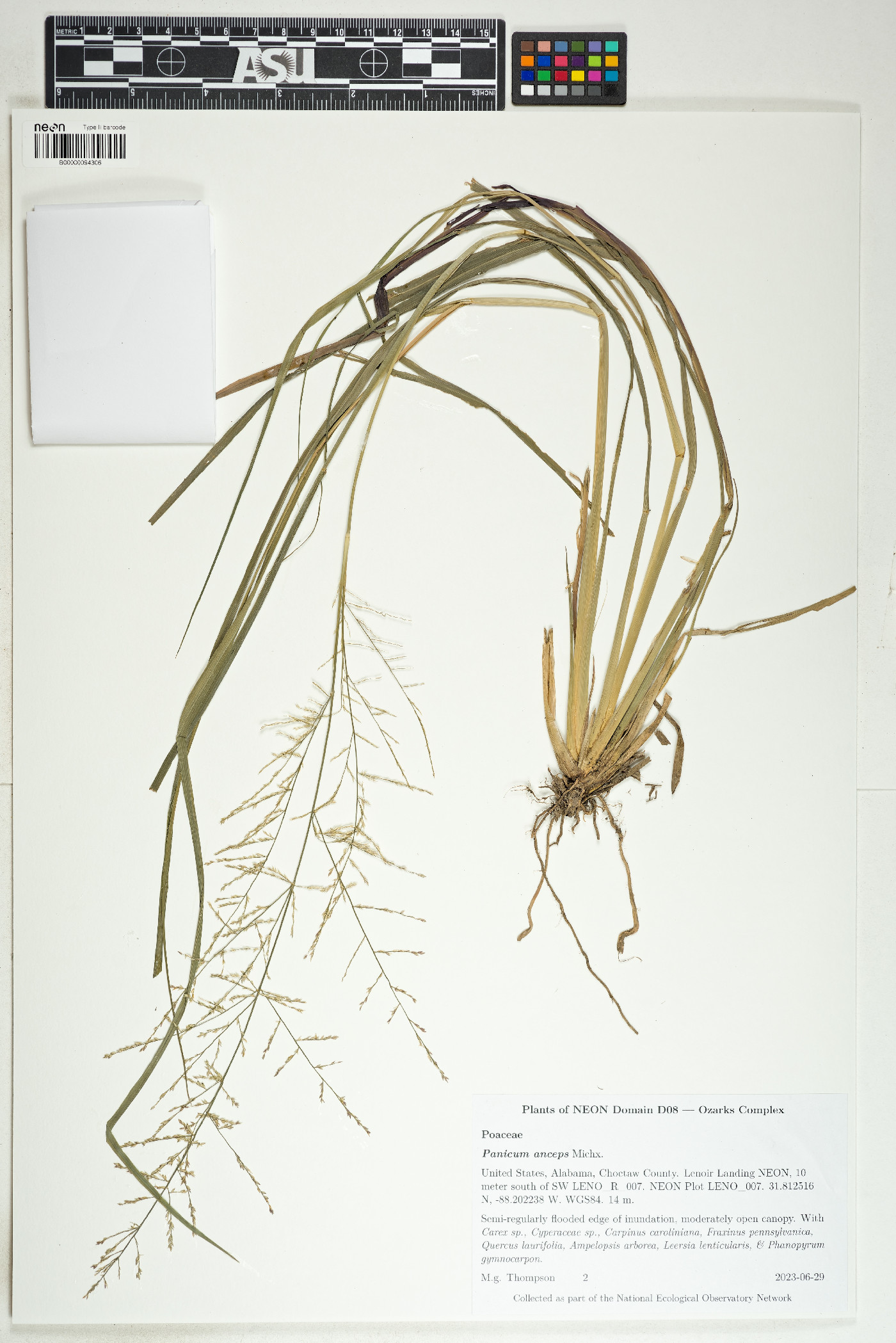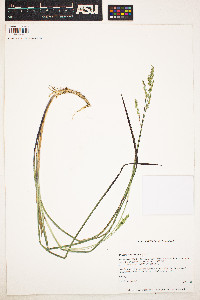Perennial herb with long or short rhizomes, tufted 30 cm - 1.3 m tall
Leaves: alternate, two-ranked. Sheaths laterally compressed, sometimes sparsely to densely hairy. Ligules often brownish, less than 0.5 mm long, membranous. Blades upright, 10 cm - 0.5 m long, 4 - 12 mm wide, parallel-veined, sometimes softly hairy beneath, softly hairy above (at least basally).
Inflorescence: a branched arrangement of spikelets (panicle), 10 - 40 cm long, one-fourth to two-thirds as wide as long, well-exserted, with relatively few, stiffly spreading or ascending branches.
Fruit: a caryopsis, indehiscent, enclosed within the persistent lemma and palea.
Culm: 30 cm - 1.3 m long, slightly compressed to round in cross-section.
Spikelets: densely crowded on appressed branchlets, nearly stalkless, pale to yellowish green, 2 - 4 mm long, egg-shaped to narrowly ellipsoid with an often sickle-shaped and gaping apex.
Glumes: unequal, herbaceous. Lower glumes one-third to one-half as long as spikelets, pointed at the apex, three-veined. Upper glumes nearly equal to lower lemmas, beaked, five-veined, keeled.
Lemmas:: Lower lemmas similar to and nearly equal to upper glumes, beaked, five-veined, keeled. Upper lemmas clasping upper paleas for all their length, stiff, thick, shiny, with rolled-up margins on the upper surface.
Paleas:: Lower paleas small, nearly equal to lower lemmas, transparent. Upper paleas longitudinally lined.
Florets:: Lower florets sterile. Upper florets bisexual, 1.5 - 2 mm long, about 1 mm wide, to three-fourths as long as spikelets, pointed at the apex, shiny, with a tuft of minute hairs at the apex. Anthers three. Stigmas red.
Similar species: No information at this time.
Flowering: June to October
Habitat and ecology: Rare in the Chicago Region, and known only from Cook County, Illinois. It grows in low, moist areas.
Occurence in the Chicago region: native
Etymology: Panicum comes from the Latin word panis, meaning bread, or panus, meaning "ear of millet." Anceps means two-edged.
Author: The Morton Arboretum



